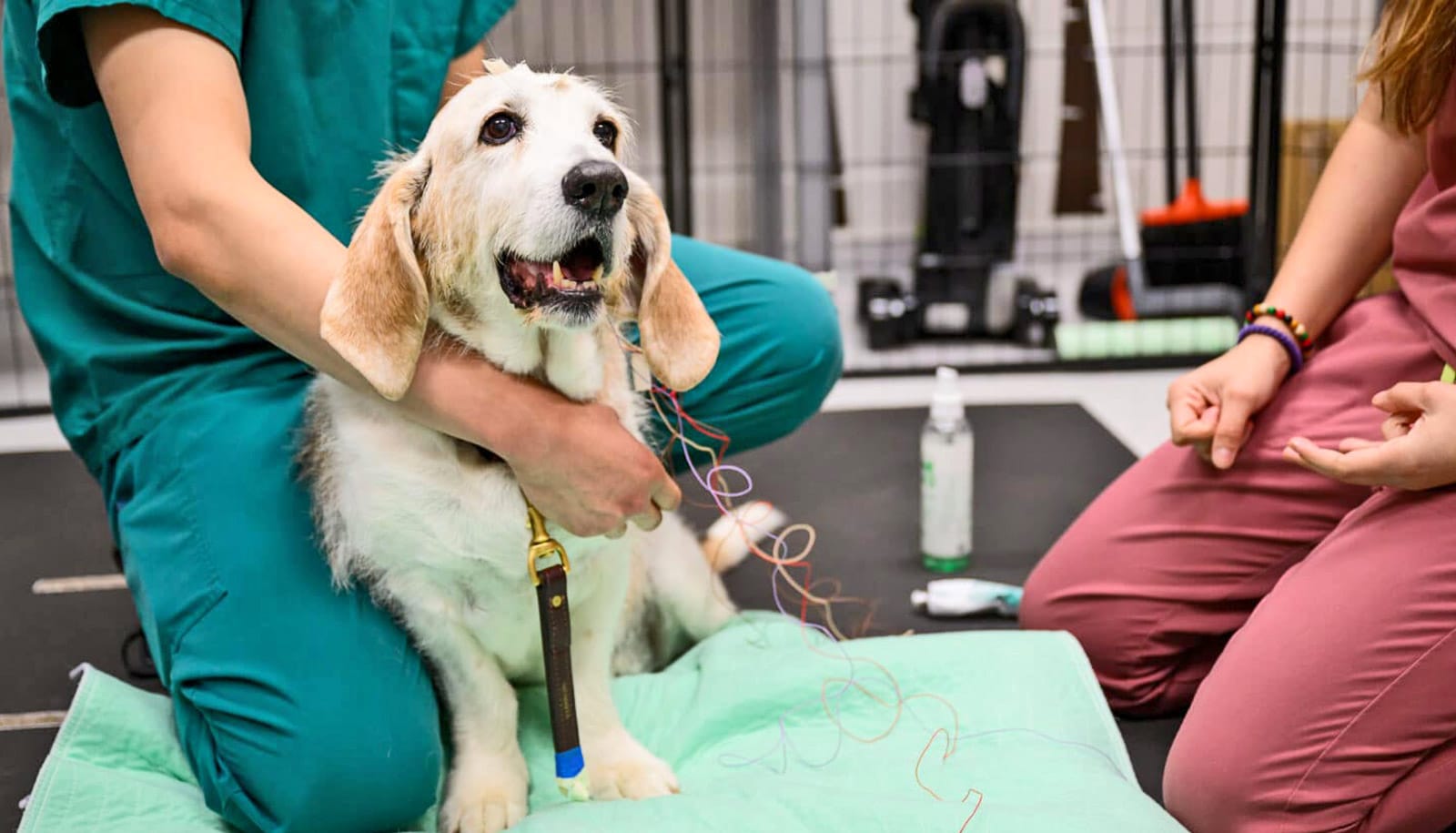Dogs with dementia suffer the same sleep disruptions that humans with dementia do.
In a new study, researchers performed electroencephalography, or EEGs, on elderly dogs to determine whether brain-wave readings during sleep correlated with signs of cognitive decline.
They found that dogs with more advanced dementia suffered more sleep disruptions and slept less overall than dogs with normal cognitive function.
The study—part of an ongoing clinical trial on canine aging and cognition—looked at 28 elderly dogs: 17 females and 11 males. Prior to the sleep study, the dogs had received complete physicals, undergone cognitive testing, and their owners completed the Canine Dementia Scale (CADES) questionnaire, in order to determine the severity of their cognitive decline.
The researchers used non-invasive techniques to gather their data—the dogs weren’t sedated, and the electrodes were affixed to the skull with sticky gel. The dogs did two sleep sessions in the lab—the first one to acclimate them to the surroundings and electrode placement, and the second to record brain activity during a two hour sleep period.
“Past sleep studies in dogs often involved surgically implanted electrodes,” says Alejandra Mondino, postdoctoral researcher at North Carolina State University and lead author of the study in Frontiers in Veterinary Science. “Non-invasive studies are relatively new. We are one of a handful of groups doing this work.”
The EEG measured four stages of sleep: wakefulness, drowsiness, NREM, and REM. NREM, or non-REM, is a deep sleep state prior to REM (which stands for rapid eye movement and is associated with dreaming).
“In NREM, the brain clears toxins, including the beta-amyloid proteins that are involved in diseases like Alzheimer’s,” Mondino says. “REM sleep is when dreams happen, and this stage is very important for memory consolidation.”
The researchers correlated the percentage of time spent in each sleep state with the dogs’ scores on cognitive testing and the CADES questionnaire. The higher the dog’s dementia score, the less time they spent in NREM and REM sleep.
“These dogs have dementia and sleep disruption is part of that,” Mondino says. “In addition to the shorter time spent sleeping, when we look at the EEG, we saw their brain activity during sleep was more akin to wakefulness. In other words, when they do manage to sleep, their brains aren’t really sleeping.”
The work is an important part of establishing baselines for identifying cognitive decline in dogs. The researchers hope that the work can lead to early diagnosis and intervention for elderly dogs with signs of cognitive decline.
“We now know that EEG signatures are useful indicators of canine cognitive dysfunction,” says corresponding author Natasha Olby, chair in gerontology at NC State. “The work further establishes the dog as a model for Alzheimer’s disease. Hopefully therapeutic trials in dogs will help to direct our choices of treatment development for people.”
The Kady M. Gjessing and Rahna M. Davidson Distinguished Chair in Gerontology, the Sleep Research Society Foundation, and the Company of Biologists supported the work.
Source: NC State



